
Arkham Asylum is a fictional psychiatric hospital appearing in American comic books published by DC Comics, commonly in stories featuring Batman. It first appeared in Batman #258, written by Dennis O'Neil with art by Irv Novick. Located in Gotham City, the asylum houses patients who are criminally insane, as well as select prisoners with unusual medical requirements that are beyond a conventional prison's ability to accommodate. Its high-profile patients are often members of Batman's rogues gallery.

The Scarecrow is a supervillain appearing in American comic books published by DC Comics. Created by writer Bill Finger and artist Bob Kane, the character first appeared in World's Finest Comics #3, and has become one of the superhero Batman's most enduring enemies belonging to the collective of adversaries that make up his rogues gallery.

Bane is a supervillain appearing in American comic books published by DC Comics. Created by Chuck Dixon and Graham Nolan, the character first appeared in Batman: Vengeance of Bane #1. He has become one of the superhero Batman’s most enduring enemies belonging to the collective of adversaries that make up his rogues gallery.

The Mad Hatter is a supervillain appearing in comic books published by DC Comics, commonly as an adversary of the superhero Batman. He is modeled after the Hatter from Lewis Carroll's novel Alice's Adventures in Wonderland, a character often called the "Mad Hatter" in adaptations of Carroll. A scientist who invents and uses technological mind control devices to influence and manipulate the minds of his victims, the Mad Hatter is one of Batman's most enduring enemies and belongs to the collective of adversaries that make up Batman's rogues gallery.
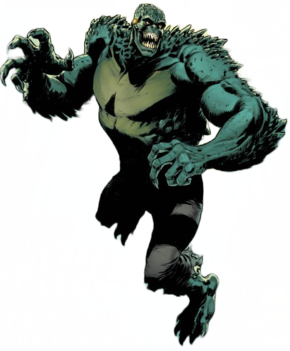
Killer Croc is a supervillain appearing in American comic books published by DC Comics. Created by Gerry Conway, Don Newton and Gene Colan, the character was introduced in Detective Comics #523. He has become one of the most enduring enemies of the superhero Batman and belongs to the collective of adversaries that make up his rogues gallery.
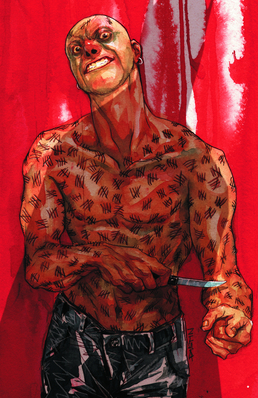
Victor Zsasz, also known as Mr. Zsasz or simply Zsasz, is a villain appearing in comic books published by DC Comics. The character first appeared in Batman: Shadow of the Bat #1. He is a sadomasochistic and psychopathic serial killer who carves a tally mark onto himself for each of his victims. A recurring adversary of the superhero Batman, Zsasz belongs to the collective of enemies that make up Batman's rogues gallery.

Maximilian "Maxie" Zeus is a supervillain appearing in American comic books published by DC Comics, primarily as a minor enemy of Batman. He is depicted as a mentally ill former history professor who is obsessed with Greek mythology and believes himself to be the god Zeus, becoming a crime lord in Gotham City.

Hush is a supervillain appearing in American comic books published by DC Comics. Created by Jeph Loeb and Jim Lee, the character first appeared in Batman #609 in January 2003 as part of the twelve-issue storyline Batman: Hush. Hush's background is parallel to the superhero Batman, and he serves as a criminal foil to him, as an example of what Batman could have been had he used his abilities and resources for malice. He belongs to the collective of adversaries that make up his rogues gallery.

Calendar Man is a supervillain appearing in American comic books published by DC Comics, as an enemy of the superhero Batman, belonging to the collective of adversaries that make up Batman's rogues gallery. Calendar Man is known for committing crimes that correspond with holidays and significant dates. He often wears costumes to correlate with the date of the designated crime. His name is a reference to the Julian and Gregorian calendars. In his debut, the character was presented as a joke villain, but in later years, writers developed Calendar Man as a dark, disturbed criminal who toys with Batman.

Professor Achilles Milo is a fictional character appearing in American comic books published by DC Comics.

Amygdala is a supervillain appearing in American comic books published by DC Comics, who is an opponent of Batman. He has reduced mental capacity, near superhuman strength and endurance, and is prone to outbursts of violence due to medical experimentation on his brain, chiefly the removal of his amygdala. Amygdala is briefly referenced in an article by Joseph LeDoux, a neuroscientist and expert in the role of the anatomical amygdala in fear processing, as testament to popular interest in the brain area.
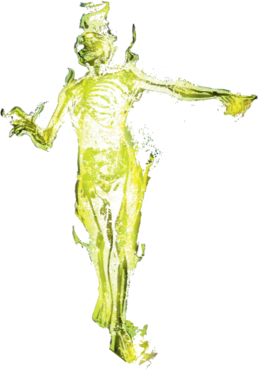
Doctor Phosphorus is a supervillain who has appeared in various comic book series published by DC Comics. Primarily an enemy of Batman, the villain exists in DC's main shared universe, known as the DC Universe.
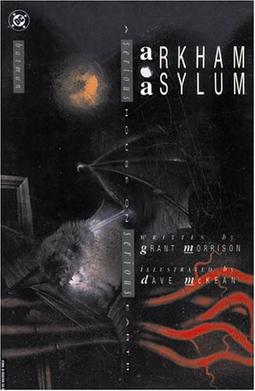
Arkham Asylum: A Serious House on Serious Earth is a Batman graphic novel written by Grant Morrison and illustrated by Dave McKean. The story follows the vigilante Batman, who is called upon to quell a maddening riot taking place in the infamous Arkham Asylum, a psychiatric hospital housing the most dangerous supervillains in Gotham City. Inside, Batman confronts many of his enduring rogues gallery, such as the Joker, Two-Face, and Killer Croc. As Batman ventures deeper, he discovers the origin of how the asylum was established, the history of its founder Amadeus Arkham, and the supernatural and psychological mystery that has been haunting the mansion.

"The Last Arkham" is a four-part Batman story arc that started the Batman: Shadow of the Bat comic book series in mid-1992. The storyline began in Batman: Shadow of the Bat #1, and finished in Batman: Shadow of the Bat #4. DC Comics later compiled the four issues into a trade paperback in 1995. The comic was written by Alan Grant and drawn by Norm Breyfogle and was responsible for the introduction of several new characters into the Batman universe.
Zebra-Man is the name of four fictional characters appearing in American comic books published by DC Comics.

Batman Eternal is a year-long weekly limited series published by DC Comics, that began in April 2014. The series featured Batman, his allies, and Gotham City, with a writing team led by Scott Snyder, James Tynion IV, Ray Fawkes, Kyle Higgins, and Tim Seeley. John Layman was initially involved but departed after the tenth issue, being replaced by Higgins. The series ran through April 2015, after which it took a hiatus before returning in October 2015 for a 26-issue weekly sequel series titled Batman and Robin Eternal, celebrating the 75th anniversary of Robin. The success of the series led to spin-off series like Arkham Manor and Gotham by Midnight, both of which emerged from events within the main series of Batman Eternal.
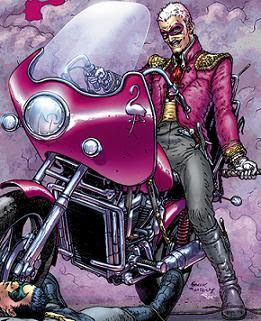
Flamingo is a supervillain appearing in American comic books published by DC Comics, commonly as an adversary of Batman.

The Scarecrow, a supervillain in DC Comics and an adversary of the superhero Batman, has been adapted in various forms of media, including films, television series, and video games. The character has been portrayed in film by Cillian Murphy in The Dark Knight Trilogy, and in television by Charlie Tahan and David W. Thompson in the Fox series Gotham, and Vincent Kartheiser in the HBO Max streaming series Titans. Henry Polic II, Jeffrey Combs, Dino Andrade, John Noble, Robert Englund, and others have provided the Scarecrow's voice in animation and video games.
Jane Doe is a character appearing in American comic books published by DC Comics. She first appeared in Arkham Asylum: Living Hell #1 and was created by Dan Slott and Ryan Sook.
Jeremiah Arkham is a fictional supervillain and the head of the Arkham Asylum in DC Comics, created by Alan Grant. Arkham was created in 1992, and slowly "lost his mind" during his time in the Arkham Asylum, subsequently becoming the second Black Mask. Though described as a sadist, Arkham seems to believe his intentions are for the benefit of his patients.
















